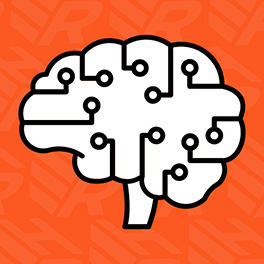 Unlike other industries, AI isn’t new to HR. Automation and AI have been used for processes, like resume data parsing, since the ‘90s. But with ChatGPT and other new generative AI models rapidly on the rise, what impact will it have on the future of HR?
Unlike other industries, AI isn’t new to HR. Automation and AI have been used for processes, like resume data parsing, since the ‘90s. But with ChatGPT and other new generative AI models rapidly on the rise, what impact will it have on the future of HR?
Let’s Chat…GPT
Since its launch in November 2022, ChatGPT has exploded. It’s already averaging over 100 million users every month, from school kids to celebrities.
So what does it mean for HR, right now? One word – ease. Typing a few prompts can generate cover letters and CVs in just seconds. It helps people who struggle with words create well-crafted, thought-out responses to job adverts.
However, the one thing the robot can’t do is be human. It can’t really connect, bring empathy or work through tricky human-situations where the answer isn’t black or white.
A tool for good
So, good news – you can’t replace the humans in ‘Human Resources’. But you can use robots to make it easier.
Here are some ways ChatGPT can be used in the future as a tool for good.
Candidate screening and recruitment:
- Similar to older AI processes, it will be able to automate the initial stages of screening, helping identify key qualifications, skills and experiences – fast.
Employee onboarding and training:
- After programming, it should be able to answer company FAQs and supply information about policies, procedures or benefits. Plus, train new starters.
Employee support and self-service:
- It could be programmed to be a virtual HR assistant that answers common HR-related queries. Like payroll, leave policies, benefits or other information.
Performance management and feedback:
- It may be used to give real-time feedback and suggestions to employees. Then assist in setting goals, tracking progress and gaining insights on performance.
Diversity and inclusion:
- It could help give fair assessments during screening to avoid bias. But the AI training data must be diverse and inclusive, so biases don’t keep sneaking in.
Analytics and insights:
- It should be able to identify patterns, trends and potential areas of improvement through employee surveys, performance reviews and metrics.
Beware of the bugs
AI models like ChatGPT are looking good for the future of our industry. But robots still have a long way to go in understanding humans.
For example, Kieran Snyder, CEO of Textio, tested ChatGPT’s ability to write job ads and performance feedback without bias – and found some issues.
“For certain professions and traits, ChatGPT assumes employee gender when it writes feedback,” Snyder said. In testing examples, “the bubbly receptionist is presumed to be a woman, while the unusually strong construction worker is presumed to be a man.”
So while this tech is making waves, it’s still got a way to go before it’s fully ready for our industry. Later models of AI need to be programmed with the right training data to ensure diversity and inclusivity – avoiding historical biases.
All in all, there’s still room for improvement when it comes to this new generative AI. But it’s about learning to use the smart-thinking tech as a tool, instead of fearing a robot takeover. After all, the humans make Human Resources – so we’re here to stay.

